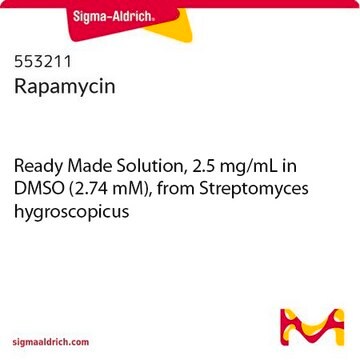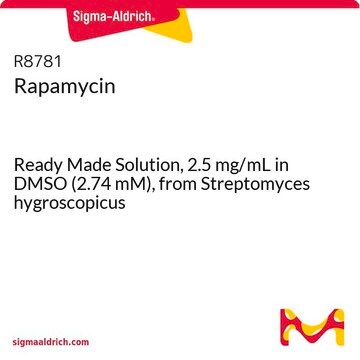475991
Torin1
≥99% (HPLC), powder, mTOR inhibitor, Calbiochem®
Synonym(s):
mTOR Inhibitor XI, Torin1, 1-(4-(4-propionylpiperazin-1-yl)-3-(trifluoromethyl)phenyl)-9-(quinolin-3-yl)benzo[h][1,6]naphthyridin-2(1H)-one, DNA-PK Inhibitor VI, PI 3-K Inhibitor XVIII
About This Item
Recommended Products
product name
mTOR Inhibitor XI, Torin1, mTOR Inhibitor XI, Torin1, CAS 1222998-36-8, is a cell-permeable, highly potent, ATP-competitive inhibitor of mTOR and DNA-PK (IC50 = 4.32 and 6.34 nM, respectively).
Quality Level
Assay
≥99% (HPLC)
form
powder
potency
2 nM IC50
manufacturer/tradename
Calbiochem®
storage condition
OK to freeze
protect from light
color
yellow-white
solubility
DMSO: 2 mg/mL
shipped in
ambient
storage temp.
2-8°C
InChI
1S/C35H28F3N5O2/c1-2-32(44)42-15-13-41(14-16-42)31-11-9-26(19-28(31)35(36,37)38)43-33(45)12-8-24-20-40-30-10-7-22(18-27(30)34(24)43)25-17-23-5-3-4-6-29(23)39-21-25/h3-12,17-21H,2,13-16H2,1H3
InChI key
AKCRNFFTGXBONI-UHFFFAOYSA-N
General description
Biochem/physiol Actions
MTOR
Packaging
Warning
Reconstitution
Other Notes
Thoreen, C., et al. 2009. J Biol Chem.284, 8023.
Legal Information
Storage Class Code
11 - Combustible Solids
WGK
WGK 2
Flash Point(F)
Not applicable
Flash Point(C)
Not applicable
Certificates of Analysis (COA)
Search for Certificates of Analysis (COA) by entering the products Lot/Batch Number. Lot and Batch Numbers can be found on a product’s label following the words ‘Lot’ or ‘Batch’.
Already Own This Product?
Find documentation for the products that you have recently purchased in the Document Library.
Customers Also Viewed
Our team of scientists has experience in all areas of research including Life Science, Material Science, Chemical Synthesis, Chromatography, Analytical and many others.
Contact Technical Service












